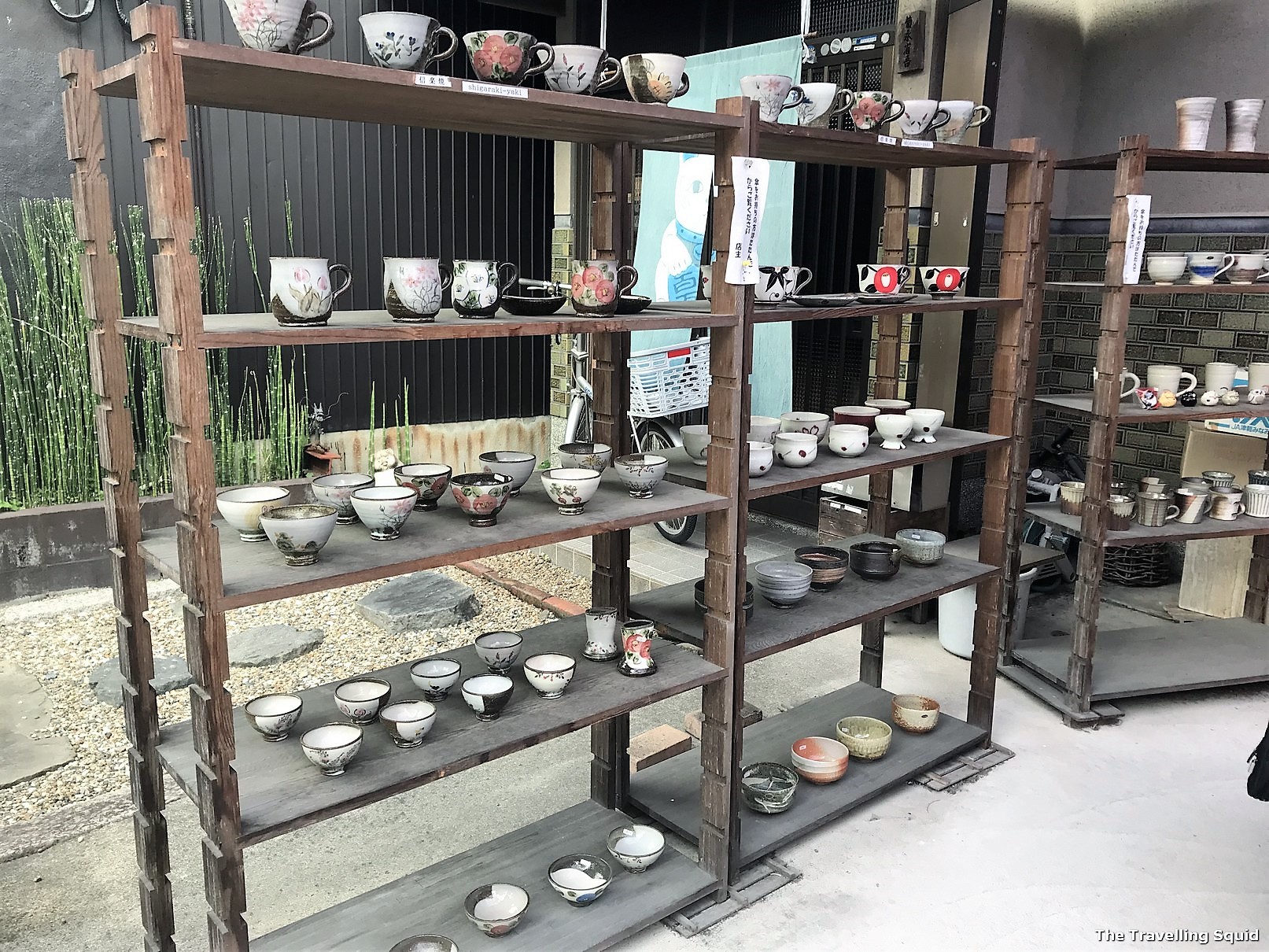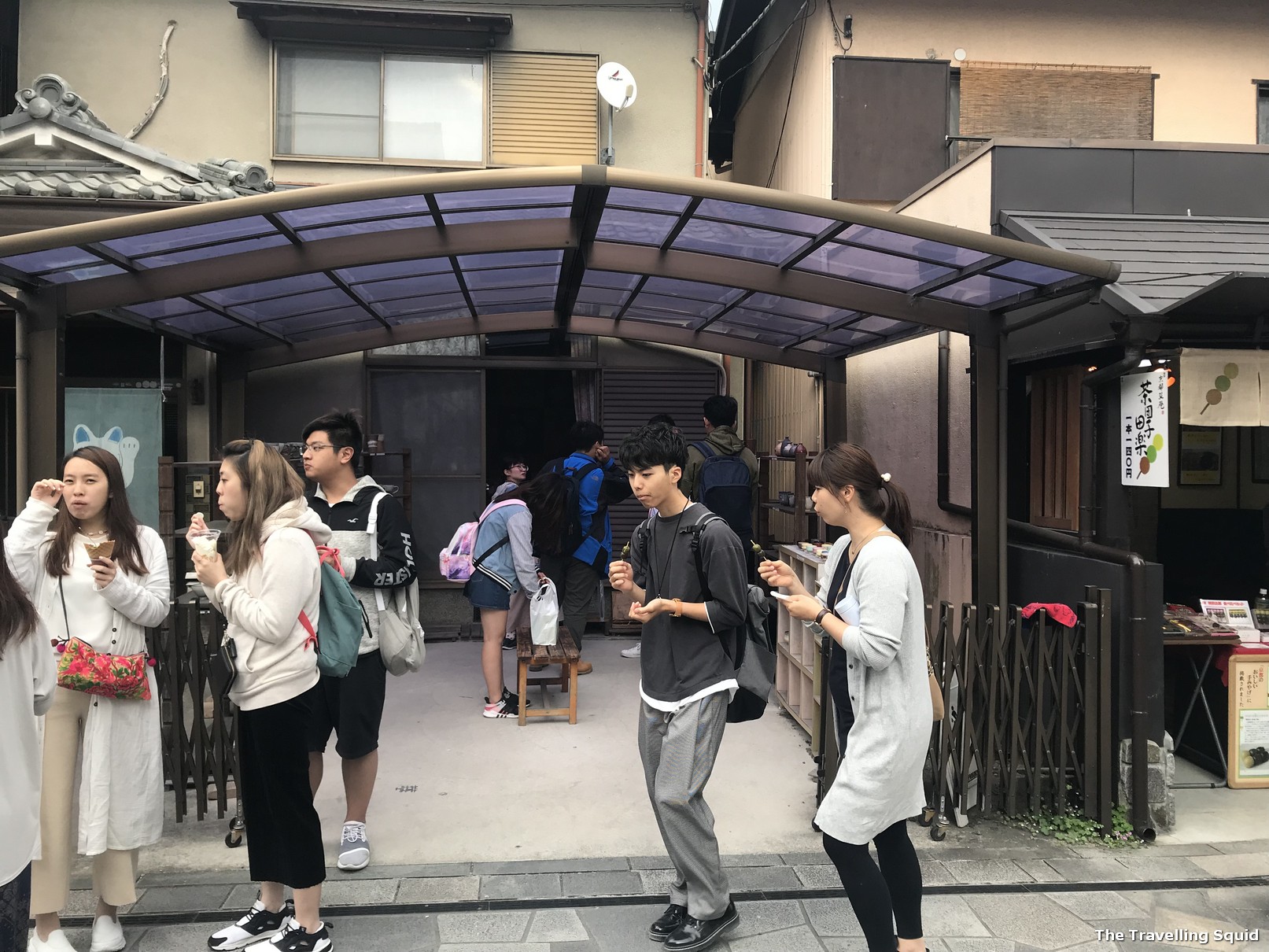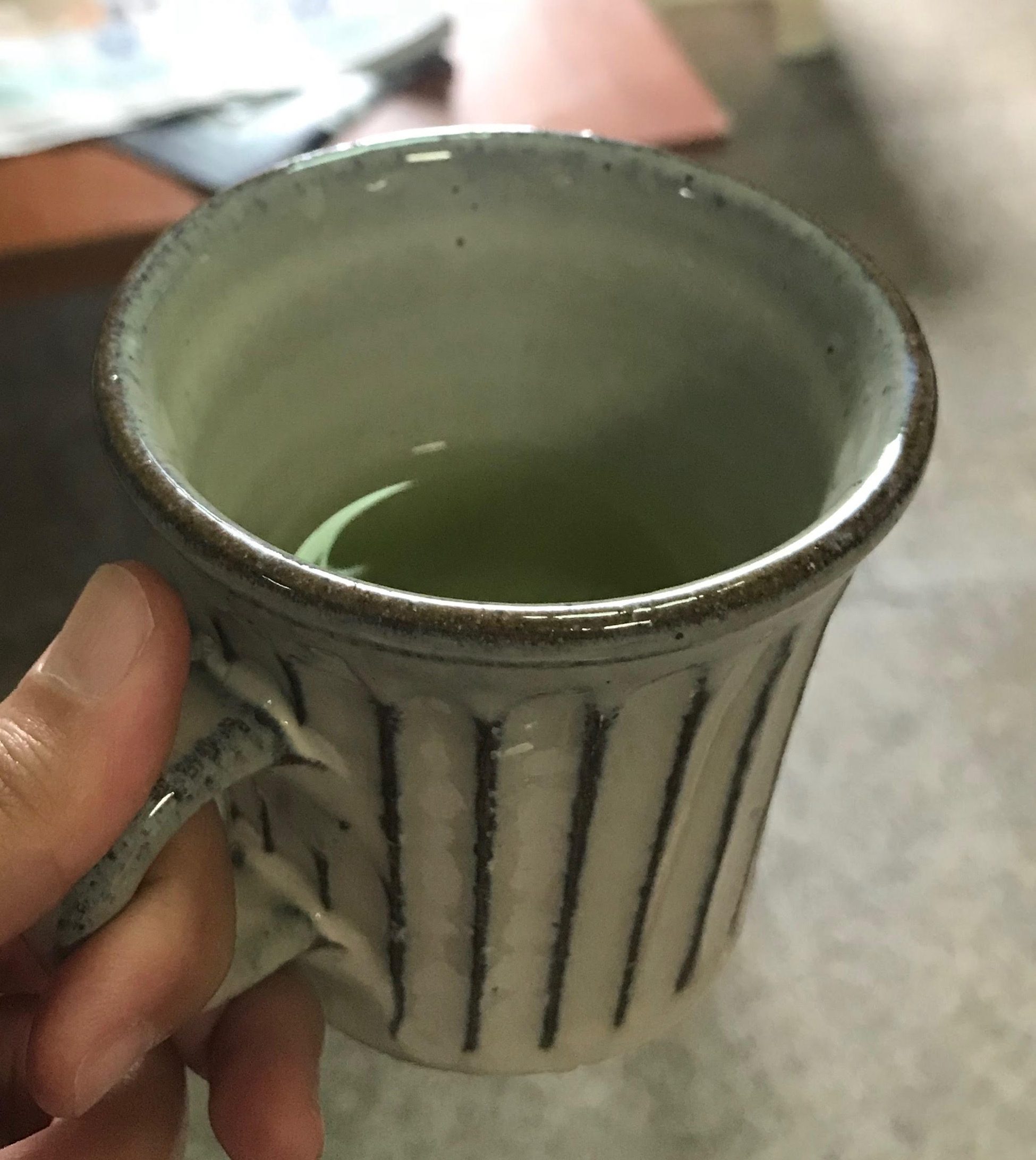Buying wabi-sabi cups from a handmade pottery shop in Uji

Uji is known for its tea shops which sell all types of Japanese teas including the likes of sencha and the premium gyokuro. We did not expect to find a pottery shop in this small but busy town, and when we did, were happy to buy some handmade cups home. According to S, the cups had a wabi-sabi element, and we ended up purchasing two cups at about SGD14 each. Here’s the story of our purchase of wabi-sabi cups from a handmade pottery shop in Uji.
According to Wikipedia, a unique aspect of Japanese pottery is wabi-sabi, (侘寂) is a concept that focuses on acceptance of transience and imperfection. The aesthetic is sometimes described as beauty that is “imperfect, impermanent, and incomplete”. It is said to be a concept derived from the Buddhist teaching. Characteristics of the wabi-sabi aesthetic include asymmetry and roughness.

The owner of the pottery shop appeared to be in his 70s. His head was covered with white hair and it seems like the shop was part of his home as well. He was very welcoming when we expressed interest in the cups, and offered us a number of cups of similar design. After we chose two cups – one white and blue, he proceeded to wrap them up carefully with layers and layers of bubble wrap, all while kneeling down. I felt a virtual ache for his knees, and wished he’d sit cross-legged instead. (By the way, the potter’s wrapping was very secure, and the cups made it back to Singapore unscathed.)

Unfortunately I’m not entirely certain of the location of this pottery shop, largely because there wasn’t a shopfront to take reference to. It’s situated among a row of tea shops with very long lines. I figured that it might be along the Byodo-in Omotesando Road – Renge Uji, Kyoto Prefecture 611-0021, Japan. Good luck with finding it! It’s very near the bridge which leads across the Uji River.

The Travelling Squid’s Take

To be honest, on closer inspection, it seem that the imperfection on the cups were not due to wabi-sabi (an intention to cause imperfection as a form of beauty), but imperfection due to the potter just starting out. Later, upon closely scrutiny of the cups, S and I figured out that based on the paint drips that had condensed slightly more at the bottom, and the number of imperfect cups that were shown to us, the potter could be doing this as a hobby. This probably wasn’t a craft through his lifetime, but something he decided to take up after retirement.
We also visited Asakusa in Tokyo later on, and realised that the quality of pottery in these shops was much higher. That said, the cups were a reminder of our time in Uji. Of a little small town, with tons of tourists, and yet a little authenticity and imperfection to remember it by.

Leave a Reply